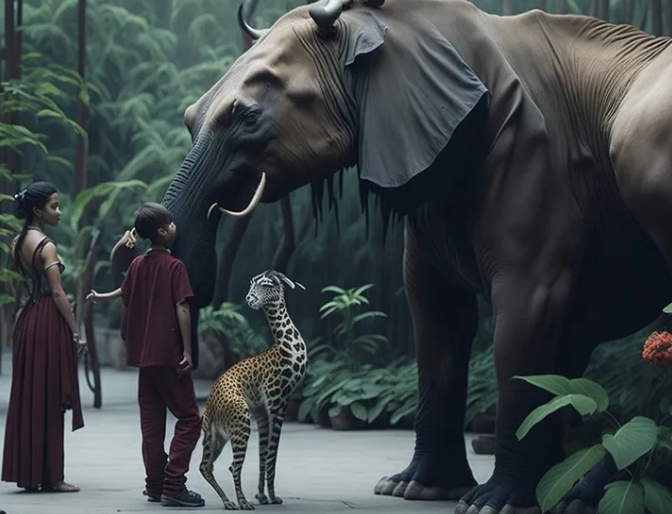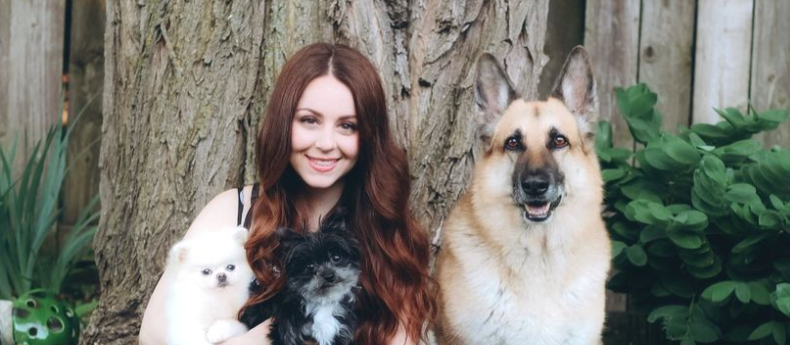An Overview of Zoo Art
The phrase “Art of Zoo” refers to a broad investigation, using a variety of artistic media, of the complex interaction between people and animals. It explores the ways in which people view, engage with, and represent animals in art, from classic forms such as paintings and sculptures to more modern manifestations in digital media and installations. This idea explores the emotional, psychological, and ethical aspects of human relationships with animals, going beyond simple representation. We can learn more about the intricacies of human-animal coexistence, the influence these connections have on individuals and civilizations, and humanity’s fascination with animals by looking at the Art of Zoo.
Defining Human-Animal Bonds
- Understanding the Concept: What Constitutes a Human-Animal Bond?
- Types of Human-Animal Relationships: Companionship, Work Partnerships, and Symbolism
- Psychological Aspects: Attachment Theory and Emotional Connections
- Cultural Perspectives: Historical and Contemporary Views on Human-Animal Bonds
- Scientific Research: Studies on the Benefits and Impacts of Human-Animal Interactions
- Communication Channels: Non-verbal Cues and Understanding Between Species
- Mutual Dependence: Exploring How Humans and Animals Rely on Each Other
- Evolutionary Insights: Tracing the Origins of Human-Animal Bonds Through Evolutionary Biology
- Contemporary Issues: Challenges and Opportunities in Nurturing Positive Human-Animal Relationships
- Future Directions: Emerging Trends and Innovations in Understanding and Enhancing Human-Animal Bonds
Historical Views on Human-Animal Interactions

Cultural, social, and environmental variables have shaped the complex interactions humans have maintained with animals throughout history. Animals were worshipped as gods in ancient cultures because they were thought to represent strength, knowledge, and divinity. Animals were necessary work and food companions in agricultural communities. Scientific research into the anatomy and behavior of animals increased during the Renaissance, which had an impact on philosophical debates and artistic representations. Animal species were exploited and brought under control for financial advantage as a result of colonial expansion. Knowing the historical background of human-animal connections offers important insights into our contemporary perceptions and interactions with the animal kingdom as we address ethical and environmental concerns today.
Evolution of Artistic Representation
Prehistoric Art:
Cave Paintings: Early Depictions of Animals in Ancient Art
Symbolism and Ritualistic Practices: Exploring the Purpose Behind Prehistoric Animal Art
Ancient Civilizations:
Egyptian Hieroglyphs: Animals as Divine Symbols in Ancient Egypt
Greek and Roman Mythology: Gods and Mythical Creatures in Artistic Narratives
Medieval and Renaissance Art:
Bestiaries and Allegorical Representations: Animals in Medieval Manuscripts
Naturalism and Scientific Inquiry: Animal Anatomy in Renaissance Art
Modern Art Movements:
Romanticism and the Sublime: Animal Symbolism in 19th Century Art
Cubism, Surrealism, and Abstract Expressionism: Experimentation with Animal Forms and Motifs
Contemporary Expressions:
Digital Art and Virtual Reality: Innovations in Animal Representation
Environmental Art: Advocacy and Activism Through Artistic Expression
Disputations Regarding Zoo Artistry
Because of how animals are shown and treated, The Art of Zoo has generated a lot of controversy and ethical discussion. Concerns regarding the rights and wellbeing of animals are raised by critics who claim that certain works of art use animals for human amusement or aesthetic enjoyment. Incidents of animal abuse or exploitation in artistic endeavors have sparked public indignation and legal consequences. Furthermore, concerns concerning the limits of artistic expression and the commercialization of animals have been brought up by the convergence of art and zoos. Within the field of Zoo Art, striking a balance between ethical considerations and artistic expression is still a difficult and continuous challenge.
Ethical Considerations:
Animal Rights vs. Artistic Freedom:
Examining the Conflict Between Advocates for Animal Rights and Artists’ Creative Liberties
Treatment of Animals in Artistic Practices:
Ethical Dilemmas Surrounding the Use of Live Animals in Performances and Installations
Alternatives to Direct Animal Involvement: Virtual Reality, Digital Art, and Animatronics
Regulatory Frameworks and Legal Obligations:
Analysis of Existing Laws and Regulations Governing Animal Welfare in Artistic Contexts
Calls for Strengthening Legal Protections for Animals Used in Artistic Endeavors
Educational Initiatives and Public Awareness:
Promoting Ethical Engagement with Animals in Art: Education, Advocacy, and Dialogue
Role of Cultural Institutions and Artists in Fostering Ethical Practices and Awareness within the Art Community
Psychological Perspectives on Human-Animal Bonds
Studying the psychological dimensions of relationships between humans and animals explores the complex dynamics of attachment, empathy, and emotional bonding between species. Psychological research indicates that human-animal interactions can have a significant positive impact on people’s wellbeing, including lowered stress levels, enhanced empathy, and enhanced social skills. The notion of attachment offers a structure for comprehending the emotional connections that people have with animals, which are similar to those seen in parent-child interactions. Additionally, research on anthropomorphism clarifies how people perceive and treat animals differently when they assign human characteristics to them. Investigating these psychological tidbits broadens our comprehension of the intricate dynamics between humans and animals.
Artists at the Forefront
- Historical Perspectives:
- Pioneering Artists and their Depictions of Animals in Zoo Settings Throughout History
- Modern Interpretations:
- Contemporary Artists Pushing Boundaries in Capturing the Essence of Zoo Environments
- Mediums and Techniques:
- Diverse Approaches Employed by Artists, from Traditional Painting to Digital Sculpture
- Themes and Motifs:
- Common Themes Explored by Artists in Zoo Contexts, such as Captivity, Conservation, and Human-Animal Relationships
- Impact and Reception:
- Critiques and Reactions to Artistic Representations of Zoos, Both from Art Critics and Public Audiences
- Collaborations and Projects:
- Collaborative Efforts Between Artists and Zoological Institutions to Raise Awareness and Funds for Conservation Efforts
- Challenges and Controversies:
- Addressing Ethical and Aesthetic Challenges Faced by Artists Working in Zoo Settings
- Future Directions:
- Anticipated Trends and Innovations in Artistic Explorations of Zoos, Including the Role of Technology and Environmental Concerns
Leading Artists
Artists have always been drawn to the complex world of zoos because they provide distinctive viewpoints on the relationship between humans and animals. The essence of zoo habitats is portrayed by artists using a variety of mediums and techniques, ranging from historical reproductions to contemporary interpretations. Their works are replete with themes like human-animal connections, conservation, and confinement, which provoke thought and discussion. Partnerships with zoological parks increase their effect even further by bringing attention to and funding conservation initiatives. However, as long as artists keep exploring zoo settings in novel ways and anticipate emerging trends, they will always have to navigate ethical and artistic issues.
Future Directions:
Technological Integration:
Exploring the Integration of Emerging Technologies like Virtual Reality and Augmented Reality in Artistic Representations of Human-Animal Relationships.
Environmental Advocacy:
Fostering Artistic Initiatives that Promote Environmental Conservation and Sustainable Coexistence with Wildlife.
Intersectionality:
Embracing Intersectional Perspectives in Art to Address Complexities of Race, Gender, and Socioeconomic Factors in Human-Animal Interactions.
Community Engagement:
Encouraging Collaborative Art Projects that Engage Local Communities in Wildlife Conservation Efforts and Dialogue.
Education and Outreach:
Utilizing Art as a Tool for Education and Outreach to Foster Understanding and Empathy Towards Animals.
Cross-Cultural Dialogues:
Facilitating Cross-Cultural Exchanges to Explore Diverse Perspectives on Human-Animal Bonds and Ethics.
Policy Advocacy:
Advocating for Policies that Protect Animal Welfare and Promote Ethical Treatment in Artistic Practices.
Interdisciplinary Collaboration:
Encouraging Collaboration Between Artists, Scientists, and Activists to Create Holistic Approaches to Addressing Human-Animal Relationships.
Ethical Guidelines:
Establishing Ethical Guidelines within the Artistic Community to Ensure Responsible and Respectful Depictions of Animals.
Continued Exploration:
Fostering Curiosity and Innovation to Continuously Explore and Expand the Boundaries of Artistic Expression in Understanding Human-Animal Bonds.
To sum up
The complex and dynamic interaction between people and animals is illuminated by an examination of Zoo Art. We learn about the subtleties and intricacies of this relationship through artistic manifestations, ethical thoughts, and historical analysis. Even though issues and problems still exist, responsible artistic practices and activism have a huge chance to have a constructive impact. In the future, it will be crucial to prioritize animal care, cultivate empathy, and stimulate dialogue. We may traverse the intricacies of human-animal relationships with compassion and understanding by embracing innovation, collaboration, and ethical principles. This will ensure a peaceful cohabitation for future generations.
Frequently Asked Questions (FAQs) about the Art of Zoo
1. What is the Art of Zoo?
The Art of Zoo explores the relationship between humans and animals through various artistic mediums, delving into themes such as companionship, conservation, and ethical considerations.
2. Is the Art of Zoo controversial?
Yes, the Art of Zoo can be controversial due to ethical concerns surrounding the treatment of animals in artistic practices and the depiction of human-animal relationships.
3. How do artists contribute to the Art of Zoo?
Artists contribute to the Art of Zoo by creating artworks that portray animals, zoos, and human-animal interactions, fostering dialogue and reflection on our relationship with the natural world.
4. What are some examples of Art of Zoo works?
Examples of Art of Zoo works include paintings, sculptures, installations, and digital art pieces that explore themes such as captivity, conservation, and the emotional bonds between humans and animals.
5. How can the Art of Zoo promote animal welfare?
The Art of Zoo can promote animal welfare by raising awareness about conservation issues, advocating for ethical treatment of animals in artistic practices, and fostering empathy towards animals through artistic expression.

